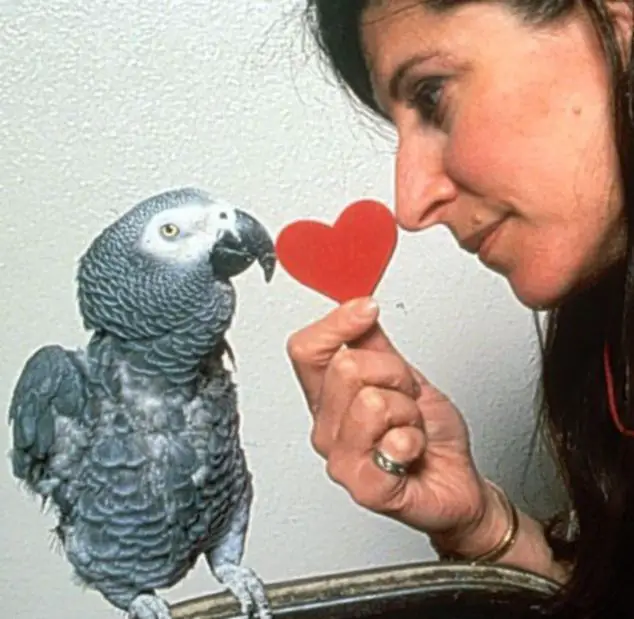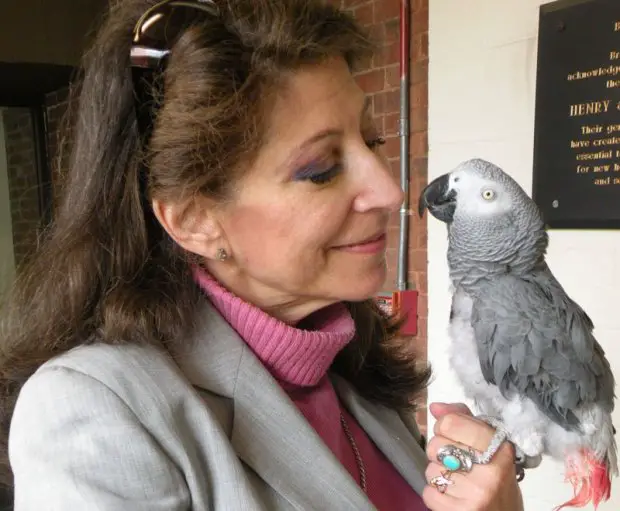Avian Articles, Blogs
Alex the Parrot’s Death: What Happened?
How did alex the parrot die, an African grey parrot, amazed the world with his learning skills. He worked with Harvard University psychologist Irene Pepperberg. Together, they showed how much Alex could learn and talk to humans.
Alex learned over 100 words1 and could answer questions about shapes, colors, and materials1. He was right about 80% of the time in tests, showing his smart thinking1.
Alex knew 50 different objects and could count up to six. He also understood big, small, same, and different. Plus, he knew what nothing meant1.
Alex even knew personal pronouns, using “I” and “you” correctly1.
But, on September 6, 2007, tragedy hit when Alex died at 31. His death was sudden and unexpected, leaving a big hole2.
Before he died, Alex said goodbye to Pepperberg, saying, “You be good. I love you. See you tomorrow.” These words were a touching goodbye from a bird who touched many hearts1.
Alex’s death was a loss for Pepperberg and the science world. But his legacy lives on, inspiring us to learn more about animal smarts2.
Key Takeaways:
- Alex, an African grey parrot with exceptional cognitive abilities, passed away unexpectedly at the age of 31, which was significantly shorter than the average lifespan for parrots in captivity2.
- Alex had an extensive vocabulary, could correctly answer questions about objects, and showcased an understanding of concepts like zero and personal pronouns1.
- His cognitive abilities and profound language skills revolutionized the understanding of bird brains and animal cognition3.
- Affectionately bidding goodbye with his last words, “You be good. I love you. See you tomorrow,” Alex left a lasting impact on those who had witnessed his incredible intelligence1.
Alex’s Mathematical Abilities and Contributions
Alex the African grey parrot was known for his amazing brain power. He made big steps in science with his math skills4. Dr. Irene Pepperberg and her team found out how well Alex could do math.
Alex could do more than just count. He could add two numbers together to get eight, which was amazing4. He could also find the total number of objects under three cups correctly most of the time4. If the total was six or less, he could add objects without a problem4. In 12 trials, Alex got the math right nine times4.
Alex was special because he could link sounds with numbers and show numbers with objects4. This showed that animals can understand numbers without needing language4. Only Alex and a chimpanzee named Sheba could show the number of items in a set4.
Dr. Pepperberg tested Alex’s math skills and saw how well he did4. Alex’s math skills were better than just guessing, showing he really understood numbers4. His work was shared in the journal Animal Cognition, helping us learn more about animal brains4.
Alex’s math skills showed how smart he was and changed what we thought about animal brains4. Sadly, he died young, so we didn’t get to see how much more he could do4.
Alex’s math skills changed how we think about animal intelligence4. His work led to more studies on how birds like African greys think and talk4.
Alex’s Language Skills and Impact
Alex, the African grey parrot, was known for his amazing math skills. But he also had incredible language skills that changed how we see bird communication.
Alex knew over 150 words and understood their meanings well5. He could count up to four, tell different objects apart, and know how big they were5. This was a big deal for birds and showed how smart they can be.
For over thirty years, Alex learned to link written and spoken English words5. He did this because he wanted nuts or bananas. He could say he was tired or sorry, showing he had a deep way of talking5. Alex even made up new words like “banery” for apple and “cork nut” for almond, showing his creative side5.
Alex’s language skills were as good as those of trained monkeys, which was surprising6. His language skills opened new doors for understanding animal intelligence and consciousness.
Alex sadly died at 31, much younger than African grey parrots usually live5. His work was thanks to Dr. Irene Pepperberg, who cared for him and researched with him. Dr. Pepperberg’s work with Alex changed how we see animal intelligence and made us think about animal ethics5.
Alex’s work still affects animal cognition research and challenges what we thought about bird smarts. His language skills and impact have led to more studies on animal intelligence. They’ve changed how we see the minds of animals other than humans5.
Comparison of Alex’s Language Skills and Impact
| Link 1 | Link 2 | |
|---|---|---|
| Vocabulary | Exceeded 150 words | Learned more than 100 English words |
| Numeracy Skills | Distinguished object compositions and identified size differences | Counted small numbers of items |
| Written Language | Associated written English words with their spoken equivalents | N/A |
| Expressive Language | Indicated feelings of tiredness or apology, vocalized preferences for rewards | Communicated in basic expressions |
| Inventive Language Skills | Created neologisms like “banery” for apple and “cork nut” for almond | N/A |
| Lifespan | Passed away unexpectedly at 31 years old | 31 years old when died |
| Researcher | Dr. Irene Pepperberg | N/A |
| Impact | Raised ethical questions, influenced research on animal cognition | Inspired further research with African grey parrots |
Alex’s Life and Achievements
Alex the African Grey Parrot was born in 1976 and lived an amazing life. He changed how we see animal intelligence and language. Dr. Irene Pepperberg led a thirty-year study with him, showing us how smart birds can be7.
Alex learned to recognize over 50 objects, count up to eight, see seven colors, and know five shapes7. He knew over 100 words and could understand complex ideas like “bigger” and “different”7. He answered questions with accuracy, proving his sharp mind7.
Alex could understand abstract ideas, like the concept of zero7. He even made up words, like “banerry,” mixing “banana” and “cherry”7. These skills amazed scientists and showed how smart birds can be.
Dr. Pepperberg used a special training method with Alex7. This method helped Alex learn and showed his deep feelings. He felt jealous and upset when new birds joined him, showing he had complex feelings7.
Alex could change his answers to fit what he wanted, showing he was very smart7. This ability made him stand out as one of the smartest birds in the world.
Alex changed the study of animal cognition and language a lot. His skills and learning were shared in scientific papers, surprising many people7. Dr. Pepperberg wrote “The Alex Studies” in 1999, sharing her work with Alex over twenty years7. This book showed the world how special Alex was.
Alex touched people’s hearts all over the world. He showed us the deep connection between humans and animals. His story made us see that intelligence and feelings are not just for humans, but also in animals, teaching us to value nature more.
Reflecting on Alex’s Legacy
Alex the African Grey parrot’s death was a big loss for science. He was known for his amazing mind and skills. His passing at thirty-one was a shock to many.
Alex could say 150 words and know about fifty objects, seven colors, five shapes, and count up to six8. He could also combine words to ask for things, refuse, and sort items, showing he was very smart8.
For thirty years, Irene M. Pepperberg and Alex worked together, becoming famous worldwide9. Their story is told in “Alex and Me,” a book that makes people laugh and cry9. The book shares their research and the special bond they had, despite trying to keep emotions out9.
Alex once asked, “What color?” This showed he was self-aware and curious, like humans and some primates10. This question changed how people think about bird intelligence, inspiring more research10.
After Alex died, many people sent thousands of emails sharing how he touched their lives8. His death was big news in the U.S., showing how much he meant to many8.
Even though Alex is gone, his work still inspires new research. His discoveries will help future bird scientists, keeping his legacy alive810.
In conclusion, Alex the African Grey parrot’s death was a sad event. But his work and intelligence will always be remembered. He changed the way we see bird intelligence.
Conclusion
Alex the parrot’s death in 2007 deeply affected Dr. Irene Pepperberg and the scientific world. He knew over 100 words and showed he understood their meanings11. At 31, he was still young for an African grey parrot11. Dr. Pepperberg spent thirty years studying Alex, using a special training method11.
Alex could do more than just mimic sounds. He even corrected other parrots during training11. Dr. Pepperberg struggled to get funding for her research11. But Alex touched many hearts, making his death very sad12.
His story is told in “Alex and Me,” published in 200812. Alex could make sounds and understand complex ideas like “none”12. The Economist and others recognized his intelligence13.
Despite doubts, Alex proved that animals are smart, not just machines13. Dr. Pepperberg faced a lot of challenges12. Alex could sense tornadoes early, showing his amazing abilities1113.
Alex’s story will inspire future studies on birds, keeping his memory alive1113.


